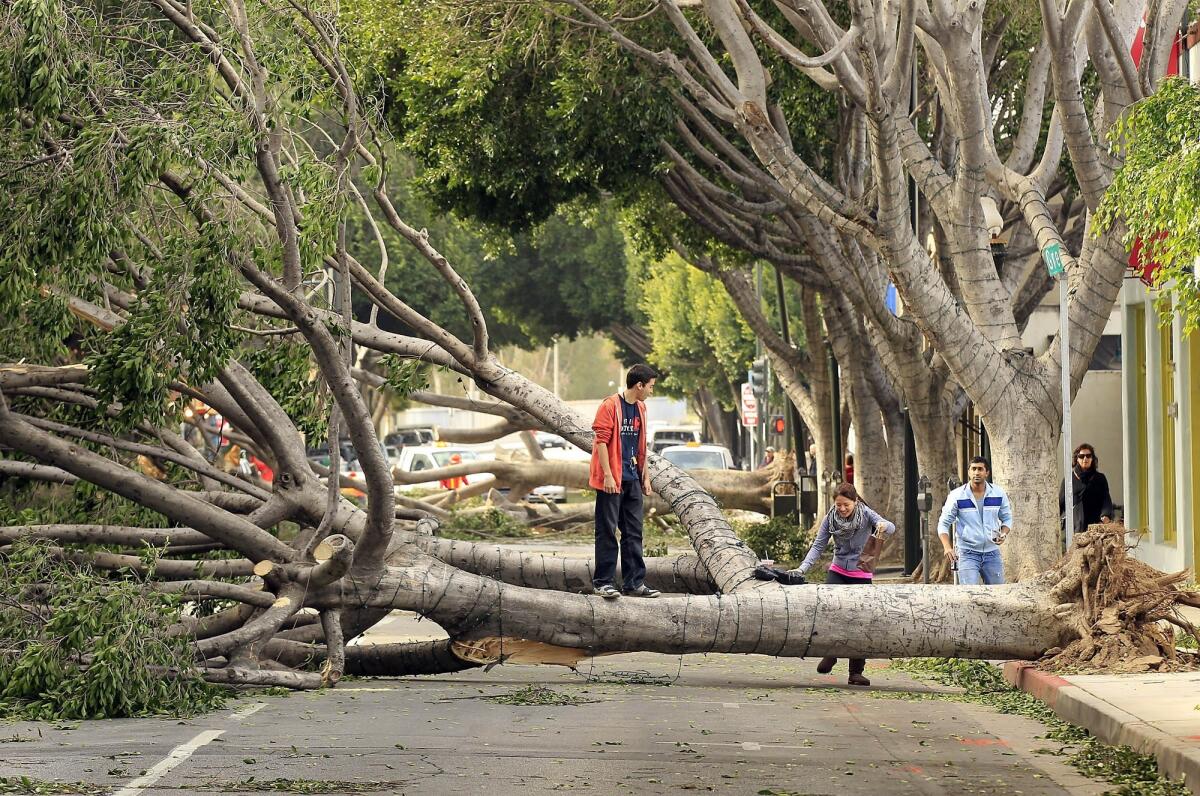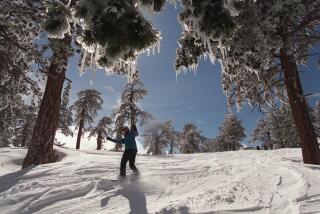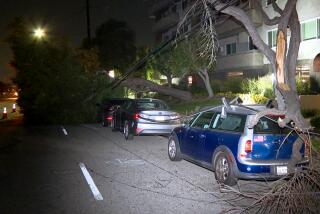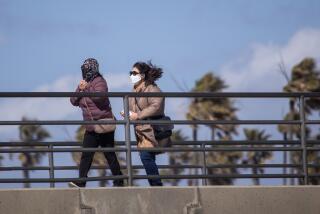The Santa Ana winds and the literature of Los Angeles

“There was a desert wind blowing that night,” Raymond Chandler writes in the famous opening to his novella “Red Wind.” “It was one of those hot dry Santa Anas that come down through the mountain passes and curl your hair and make your nerves jump and your skin itch. On nights like that every booze party ends in a fight. Meek little wives feel the edge of the carving knife and study their husbands’ necks.”
Chandler had it exactly right, the way the Santa Ana gets under our skin. I’ve been thinking about that a lot this week, as the heat rises and the fire threat increases and the uneasy rustling at my window makes my hair stand up on end.
I detest the Santa Ana; it is my least favorite aspect of Southern California life. In her essay “Los Angeles Notebook,” Joan Didion characterizes it as one of “a number of persistent malevolent winds … a foehn wind, like the foehn of Austria and Switzerland and the hamsin of Israel.”
“Los Angeles Notebook” describes, in part, the peculiar effect of such a wind. “Whenever and wherever a foehn blows,” Didion writes, “doctors hear about headaches and nausea and allergies, about ‘nervousness,’ about ‘depression.’ In Los Angeles some teachers do not attempt to conduct formal classes during a Santa Ana, because the children become unmanageable. In Switzerland the suicide rate goes up during the foehn, and in the courts of some Swiss cantons the wind is considered a mitigating circumstance for crime.”
Her conclusion? “To live with the Santa Ana, is to accept, consciously or unconsciously, a deeply mechanistic view of human behavior.”
The same, of course, could be said of much in Southern California, which exists in the peculiar tension between the human-built environment and the elemental landscape underneath. Earthquakes, floods, fires: All help remind us how tenuous our lives here are. The Santa Ana, though, is different — perhaps because of how it teases us, how it plays off our unease.
Fire, flood or tremor … these are all first and foremost events, with a beginning, middle and an end, something of a clear-cut narrative. The Santa Ana, on the other hand, is more a state of being, a red alert, in which it is the condition of risk that is asserted, rather than the risk itself.
This, of course, is hardly true for everyone. Just as some people embrace the rollicking thrill of earthquakes, there are those who are not bothered by the wind. And yet, for writers such as Didion and Chandler, the Santa Ana is an emblem of disruption because, for them, Los Angeles is a disrupted world.
We can take issue with that impression of the city; I sometimes do and sometimes don’t. But when the Santa Ana starts to blow, I invariably grow edgy … unable, in the most concrete sense, to settle myself down.
On the one hand, this supports the notion of the Santa Ana as mechanistic, a force of nature rather than a force of mind. On the other, it frames the wind as part of both the landscape and the imagination, a lens through which we reckon with where we are.
“[T]he violence and the unpredictability of the Santa Ana affect the entire quality of life in Los Angeles,” Didion assures us, “accentuate its impermanence, its unreliability.”
More to Read
Sign up for our Book Club newsletter
Get the latest news, events and more from the Los Angeles Times Book Club, and help us get L.A. reading and talking.
You may occasionally receive promotional content from the Los Angeles Times.







